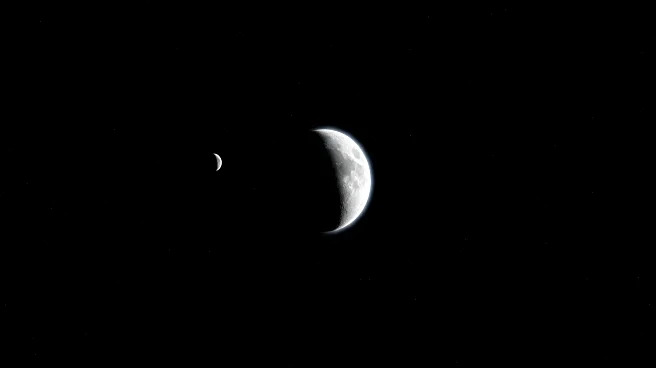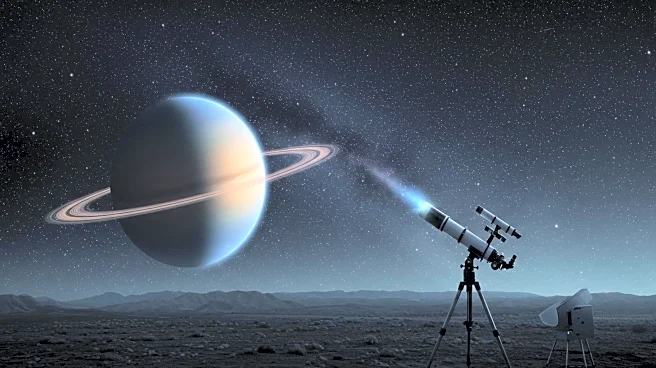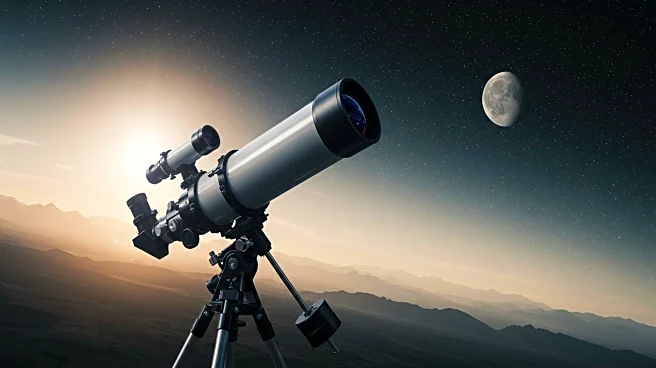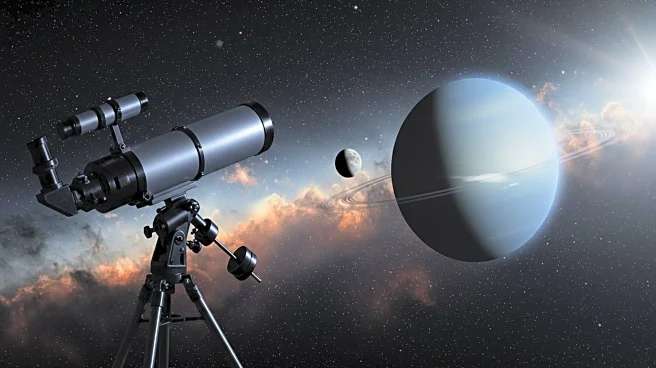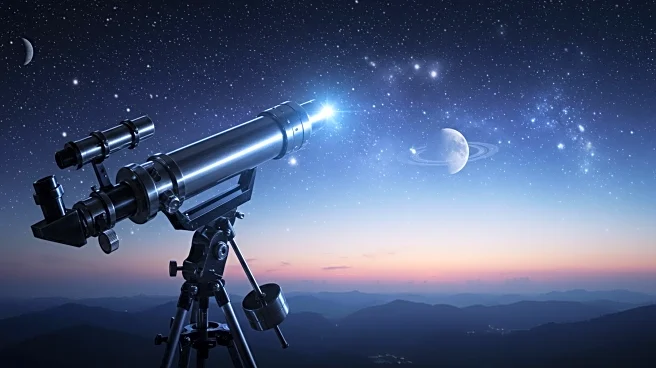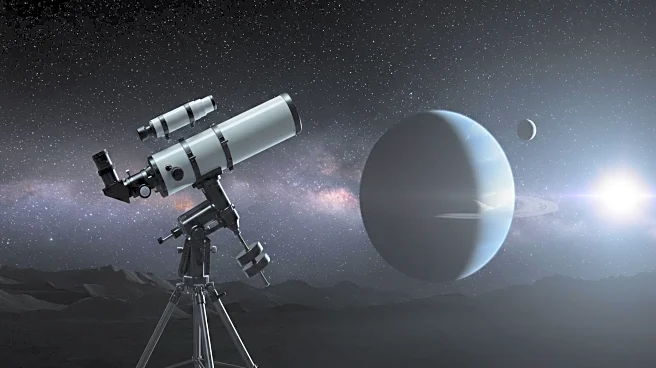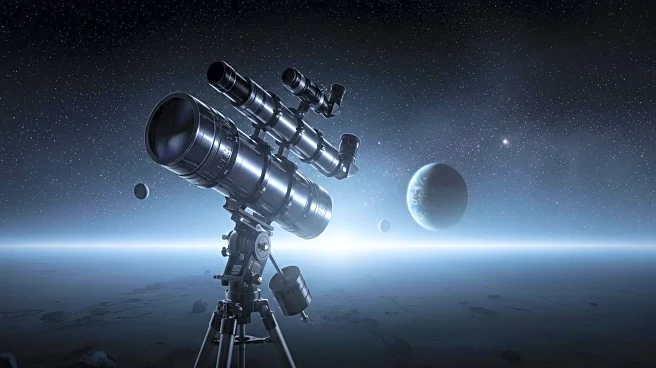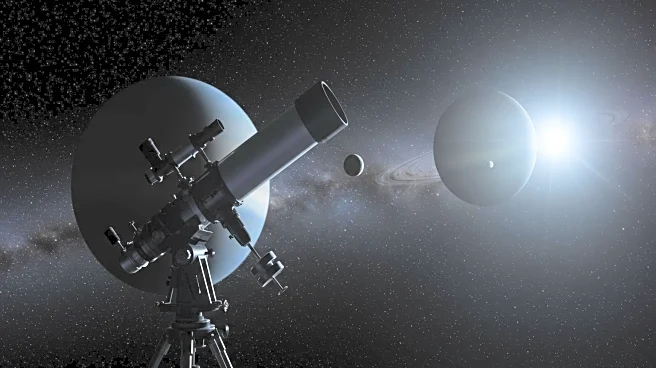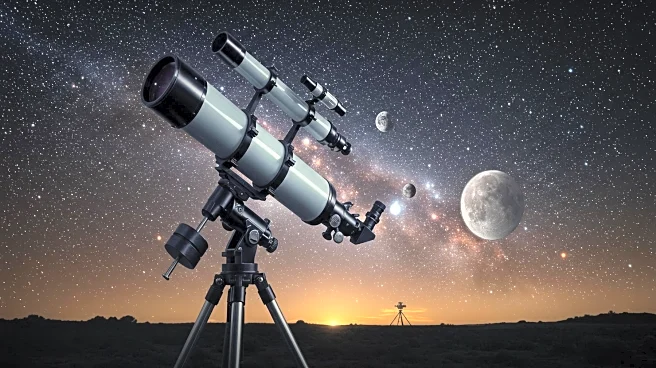What is the story about?
What's Happening?
NASA has announced the discovery of a new moon orbiting Uranus, identified as S/2025 U1. This moon, detected by the James Webb Space Telescope, is approximately 6 miles in diameter, making it smaller and fainter than previously known inner moons. The discovery was made using the Near-Infrared Camera (NIRCam), which has high resolution and infrared sensitivity. The moon is located about 35,000 miles from Uranus' center, between the orbits of Ophelia and Bianca. This addition brings the total number of Uranus' moons to 29, with five considered major moons: Miranda, Ariel, Umbriel, Titania, and Oberon.
Why It's Important?
The discovery of S/2025 U1 highlights the capabilities of the James Webb Space Telescope in detecting smaller celestial bodies that were previously invisible to missions like Voyager 2. This finding underscores the complexity of Uranus' moon system, which includes numerous small inner moons. The presence of these moons suggests a dynamic and possibly chaotic history, blurring the lines between the planet's ring system and its moons. The discovery could lead to further insights into the formation and evolution of Uranus' satellite system, potentially impacting our understanding of planetary systems.
What's Next?
The newly discovered moon will need to be officially named by the International Astronomical Union (IAU), which is responsible for naming astronomical objects. Further observations and studies may be conducted to explore the moon's characteristics and its interactions with Uranus' rings and other moons. This discovery may prompt additional research into the complex dynamics of Uranus' satellite system, potentially revealing more about the planet's history and the processes that govern moon formation.
Beyond the Headlines
The discovery of S/2025 U1 may have implications for understanding the broader dynamics of planetary systems. The intricate relationships between Uranus' moons and rings could offer insights into similar systems elsewhere in the universe. Additionally, the advanced capabilities of the James Webb Space Telescope may lead to further discoveries of small celestial bodies, enhancing our knowledge of the solar system's diversity.
AI Generated Content
Do you find this article useful?
